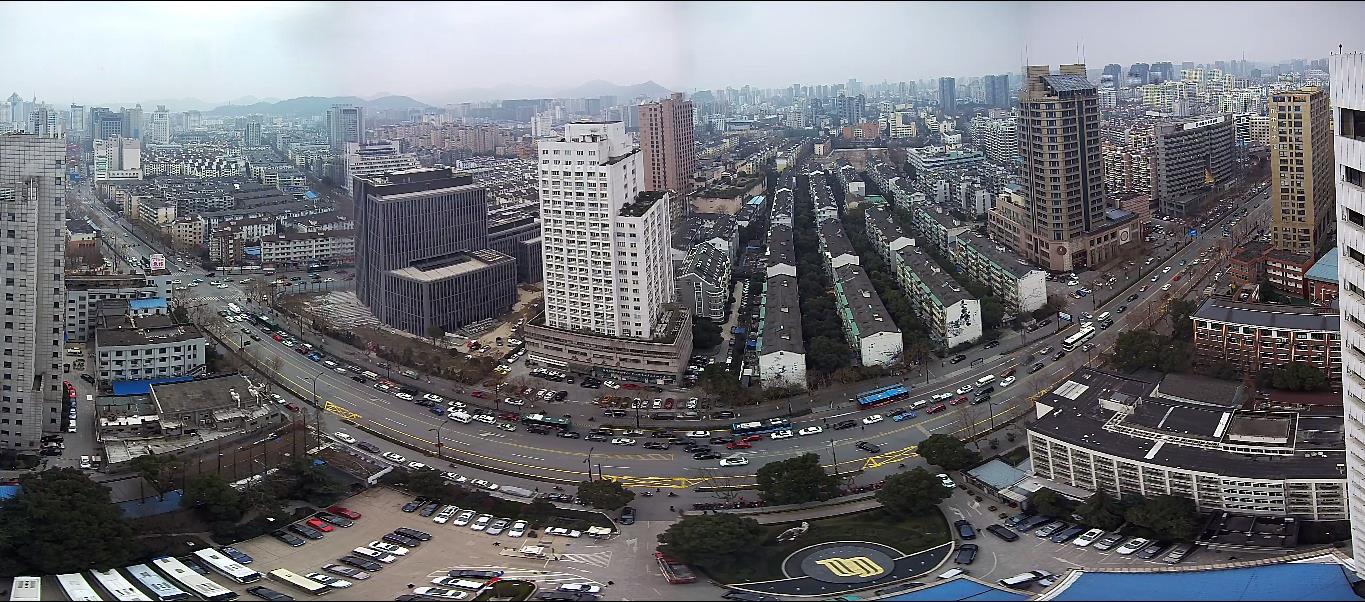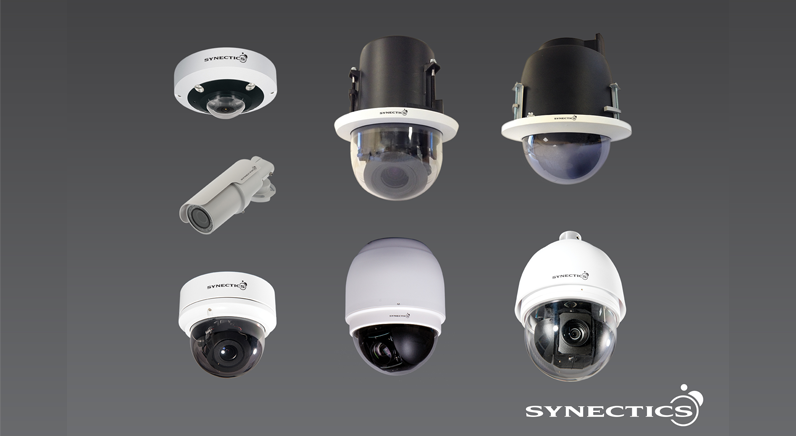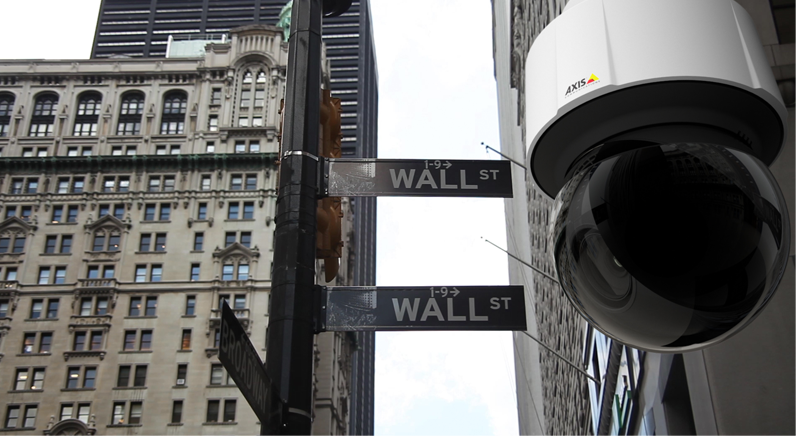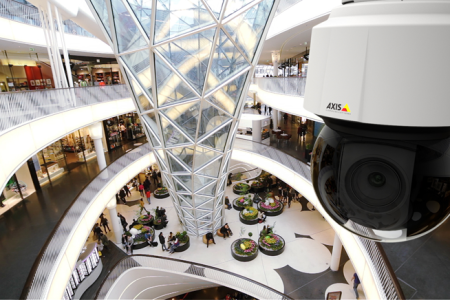An eye for video surveillance camera resolution and compression
Tim Compston, Features Editor at Security News Desk, finds out that in the race for megapixels there is more than meets the eye to High Definition (HD) and Ultra HD (UHD) 4K IP-based video surveillance cameras.
With HD (High Definition) and 4K cameras being deployed in ever increasing numbers few would argue against the fact that they are opening up new and exciting opportunities for what can be captured on camera. However, with all the potential for added detail it is also vital, according to the experts, not to get swept away in the race for pixels but rather to consider the context in which these solutions are going to be deployed – including the available bandwidth and low light performance – to ensure that they are actually fit-for-purpose.
By the numbers
 Talking to Jon Cropley, Principal Analyst – Video Surveillance and Security Services at IHS, about the state-of-play of the camera market he says that, despite all the buzz around 4K cameras, the actual proportion of sales they represent is still relatively small: “The penetration in EMEA is much less than one per cent of cameras sold.” Regarding where 4K cameras are starting to make an appearance, albeit in small numbers, Cropley points to wide area surveillance for transportation, city surveillance, sports and leisure, as the applications of choice here. Although 4K cameras have not taken off in a big way yet, Cropley reveals that IHS is predicting this to change, significantly, by the end of the decade: “We have put together our best forecast to give people a broad indication of where we think it [4K] will end up. We expect, globally, over 20 per cent of network cameras sold in 2020 will be 4K cameras.”
Talking to Jon Cropley, Principal Analyst – Video Surveillance and Security Services at IHS, about the state-of-play of the camera market he says that, despite all the buzz around 4K cameras, the actual proportion of sales they represent is still relatively small: “The penetration in EMEA is much less than one per cent of cameras sold.” Regarding where 4K cameras are starting to make an appearance, albeit in small numbers, Cropley points to wide area surveillance for transportation, city surveillance, sports and leisure, as the applications of choice here. Although 4K cameras have not taken off in a big way yet, Cropley reveals that IHS is predicting this to change, significantly, by the end of the decade: “We have put together our best forecast to give people a broad indication of where we think it [4K] will end up. We expect, globally, over 20 per cent of network cameras sold in 2020 will be 4K cameras.”
By contrast with 4K cameras, the footprint of HD (High Definition) cameras is very extensive already and, in fact, Cropley believes that the days of standard definition cameras – are numbered: “On the network side there is very little standard definition left and even on the analogue [camera] side a lot of it has been moving to HD analogue. There might be one or two applications where people just want to replace their existing SD cameras with new SD cameras but, by and large, everything is moving to HD. The minimum HD standard of 720p was the de facto but now people are going for 1080p,” says Cropley.
The path to higher resolution
For his part, Martin Gren Co-founder of Axis Communications – and the company’s Director of New Projects – is keen to give me a historical perspective on the race for camera resolution and, crucially, the compression techniques adopted to help cope with growing bandwidth demands. The early days of HD cameras were, admits Gren, far removed from the sort of performance that is taken for granted today: “We launched our first camera with HD resolution in 2004, called the AXIS 206M.” Although he says that this camera had ‘fantastic image quality’ the main drawback centred round the fact that the original 206M model was extremely slow: “I think that it only did up to 12 frames per second, and required a minimum illumination of more than 100 lux, which isn’t really practical for video surveillance purposes.”
Gren goes on to explain that up until 2008, alongside the technical challenges, there were other limitations holding things back in the camera resolution stakes. Looking back the two factors which stood out for Gren at the time were, specifically, a lack of standards around resolution and also compression: “People were effectively using Motion JPEG and it really took up too much bandwidth.” For Gren the year of 2008 marked a real turning point in the evolution of network video cameras: “I would like to say that it was Axis driving this change. Just as in the analogue world where there were standards – PAL or NTSC or 4CIF – basically we needed a standard for IP video and that standard was HD [High Definition] quality. In the same year you also got the H.264 [compression] standard.”

Asked why, on the compression front, Axis threw its weight behind H.264, Gren says that this move was made against the backdrop of a ‘standards war’ between H264 and JPEG 2000: “We took the position to go with the multimedia standard because we believed in open standards – and still do – and that was why we were pushing it. There was a lot of debate, a bit like a VHS and Betamax type of discussion.” Gren concedes that, theoretically, JPEG 2000 was probably a better standard in terms of video for surveillance purposes for still images but, ultimately, it just didn’t have the volume that the multimedia products associated with H.264 had: “In the end we decided to bet on the H.264 standard as JPEG 2000 was just too niche. H.264 also had so many benefits: it was widely available already by then and all the consumer electronics companies were targeting it. There was an established patent too which, unfortunately, is a bad thing but nevertheless necessary to provide clarity,” explains Gren.
Putting some numbers on the impact of the adoption of H.264 by Axis, at the same time as the company embraced full HD, Gren recalls a big upswing in camera take-up over the course of less than 12 months: “Funnily enough in the year of 2008 for the first quarter we hardly sold any H.264 and HD products but for the last quarter more than half of our sales were HD resolution and H.264. The transformation happened extremely quickly.”
Talking 4K
Fast forward to the situation today and Peter Ma, Project/Pre-sales Supervisor for the UK at Hikvision – the world’s leading supplier of video surveillance solutions – tells me that the company has now embraced Ultra HD or 4K technology in a big way: “Speaking of 4K resolution we have actually released a lot of 4K resolution cameras: box cameras, bullet cameras, and also PTZ cameras.” Ma says that Hikvision is already geared up to offer a comprehensive 4K product line to its customers: “We also have decoders with 4K resolution decoding, recorders to output it in 4K resolution, and 4K monitors.”
Pressing Ma about the implications of the wider adoption of 4K, he explains that when people talk about 4K this equates to around 8 megapixels. He then addresses the all-important question of bandwidth: “The bandwidth for 4K resolution at the moment, if we are using the standard H.264 compression codec, is roughly 12 to 16 megabytes but at Hikvision we also have our own codec: H.264 Plus. If the customer is using H.264 Plus on the camera it reduces bandwidth by 50 per cent.” This reduction, Ma explains is an average figure: “If the camera is used in a meeting room where there isn’t much motion we can reduce bandwidth, in this case, by maybe 70 or 75 per cent but if the customer uses the camera to monitor traffic in a very busy shopping centre then the result may be similar to that found with H.264 alone.”
 Turning to the current state of play with H.265, Ma predicts that by next year – or the year after – many manufacturers will be bringing H.265 cameras and devices to market but that, for a number of reasons, at the moment H.264 remains ‘on trend’ as the most popular codec for the video surveillance industry: “One problem is that if a customer wants to use H.265 today they have to buy new hardware whereas if they want to go for H.264 Plus there is no hardware change. It is very easy to upgrade,” says Ma. He adds that another major hurdle for manufacturers across the world planning for the H.265 codec involves the patent: “Each manufacturer is waiting for the patent issue to be resolved. Once this happens everyone will launch H.265 devices.”
Turning to the current state of play with H.265, Ma predicts that by next year – or the year after – many manufacturers will be bringing H.265 cameras and devices to market but that, for a number of reasons, at the moment H.264 remains ‘on trend’ as the most popular codec for the video surveillance industry: “One problem is that if a customer wants to use H.265 today they have to buy new hardware whereas if they want to go for H.264 Plus there is no hardware change. It is very easy to upgrade,” says Ma. He adds that another major hurdle for manufacturers across the world planning for the H.265 codec involves the patent: “Each manufacturer is waiting for the patent issue to be resolved. Once this happens everyone will launch H.265 devices.”
Putting 4K cameras into a wider camera context, Ma confirms – in line with what other vendors and researchers have been saying – that for the moment three or four megapixel cameras are still ahead of the field in the popularity stakes. As to why this is the case, Ma says that not all end users have a very good network. On the other hand, Ma confirms that Hikvision already has many projects in the UK – and across the world – using 4K cameras for monitoring in the centre: “It depends on the customer. For most of the customers they are still looking at 1080p but for an important position or location 4K cameras are being used to get more detail and good image quality,” concludes Ma.
A panoramic view
Drilling down to some of the new camera models being rolled out by Hikvision, one recent standout launch relates to the state-of-the-art PanVu series of panoramic cameras. According to Hikvision the beauty of the PanVu series is its ability to unlock ultra-high definition, distortion-free, 180-degree and 360-degree video added to powerful Smart Tracking Capabilities. This, Hikvision suggests, makes the PanVu series of cameras a very good fit for expansive, open-area, monitoring at locations like stadiums, city centres, airports and car parks. In practice, Hikvision says that with the PanVu series there is the potential to replace multiple cameras with just one multi-sensor unit, curtailing costs and technical complexity. In practical terms rather than relying on several cameras – and server-level video stitching software – to produce a single panoramic picture this can now be achieved via a single camera unit.

HD camera IP solutions
Interestingly, not every video surveillance vendor is rushing into the Ultra HD or 4K space, following-up with Wayne Barraclough, Product Manager for HD IP Cameras at Synectics, he tells me that the company has just launched a new range of HD IP camera solutions with improved True WDR (Wide Dynamic Range). All cameras in the line-up, he says, are designed to deliver a minimum 1080p/2MP (megapixel) quality with a full frame rate of 50/60 fps and feature the latest Sony sensor technology for improved low-light and daylight performance.
Barraclough reveals more about the thinking behind Synectics’ camera range – including the new additions – remaining, essentially, as a two megapixel offering: “The reason why two megapixels is where we are at the moment is that, in our view, this really offers the optimum position between the quality of picture and low-light performance. Also, when you start to roll that out into an entire system, in terms of your need for storage and the time you can store things for, it is absolutely the sweet spot for all of these things.” Barraclough adds that the new sensor introduced by Sony, which Synectics has now integrated into its latest HD IP camera solutions, means that the resulting low light performance is much better than before: “These are only available in two megapixel chipsets so it makes sense to stay at this level of resolution,” he explains.

With today’s camera technology, Barraclough stresses that the size of the sensor relative to the number of pixels is a critical performance measure where low light performance is concerned: “If the sensor size is the same – no matter whether you have two, three, or four megapixels – when you put on three million pixels each pixel will necessarily have to be smaller than for a two megapixel version.” It follows on from this, says Barraclough, as the number of pixels grows this results in a corresponding fall-off in the amount of light reaching an individual pixel. In his view this is one of the big disadvantages, which needs to be weighed against the advantages, of being able to call upon a greater pixel density. He adds that this light deficit – and the associated impact on camera performance – is by no means a new issue and first came to prominence during the early days of the move from standard definition to HD cameras: “Depending on how far back you go with standard definition, when you think about it, turning from a half inch CCD to effectively a one-third inch megapixel sensor – and a CMOS rather than a CCD sensor – yes the resolution was a lot higher back then but the low light performance was also much reduced.”
Whitepaper
In terms of more detailed guidance on the whole area of camera resolution and compression, Barraclough is keen to reference a whitepaper that Synectics has just produced entitled: ‘Surveillance Camera Trends: The Future in HD’. This is certainly thought provoking and sets out the pros and cons of the emerging technologies here. On the question of 4K cameras, for example, the whitepaper acknowledges that the undisputable benefit of 4K cameras is that the images they produce have a much greater pixel density. This allows for ‘deeper’ image analysis and greater flexibility. On the negative side, the whitepaper says that there are drawbacks and challenges with 4K, specifically around ‘real-time rendering, bandwidth, and storage.

Operational requirement
Stuart Bettle, Video Product Marketing Manager, EMEA, at Tyco Security Products agrees with other vendors that there are a multitude of issues related to camera resolution and people being fully informed about these: “Let’s go back a couple of years and people might have been asking for one megapixel, now they are asking for two and some for three and five.” In reality, Bettle believes, it all boils down to what the operational requirement of the CCTV system is and what it is going to be used for: “Is sometimes such high megapixels a waste, will they be used? The benefit is obviously if I have a 4K camera, for example, looking at the same field of view that I might have done with an analogue camera then the pixel density will be better, therefore I have, post event, the capability to do very good in-depth searches of the video. Of course the question is whether this is always a requirement and sometimes it isn’t.”
Wireless video streaming
As cities and other large areas look to undertake real-time video streaming – even over wireless networks – in the view of Mark Patrick – a spokesperson for Digital Barriers – there remains a pressing issue around the handling of higher resolution cameras and, of course, the sheer number of cameras of all types that are on the ground now: “How do you transmit it [the video]? How do you store it and how do you make sense of it?” Patrick reckons that Digital Barriers has a potential solution here through its EdgeVis solution: “This is a codec that was developed over ten years ago from a University of Strathclyde project to address the challenges of streaming video over cellular, in the days of GPRS and at the advent of 3G.”
Patrick reports that what is distinctive about Digital Barriers’ codec – now in its sixth generation – is the way it was designed from the ground up for surveillance streaming over constrained networks. According to Patrick when you look at Motion JPEG and H.264 – which are the primary codecs in use for video surveillance – they were really designed with the DVD – and now the Blu-ray markets – in mind where there is a fixed transmission bandwidth: “The challenges with those codecs is that they are thirsty and not, particularly, adaptive compared to our codec,” says Patrick.
In practice, Patrick claims that Digital Barriers’ EdgeVis Live reduces the cost of sending data over wireless networks by using, potentially, 60 per cent less bandwidth, thanks to its patented TVI video compression, compared to standard technologies. Alongside this, another benefit – he is keen to reiterate – is the ability to deliver smooth frame rates without the stalling, break-up and latency which other approaches suffer from.
Regarding the codec’s current operational footprint, Patrick reports that this approach to real-time video streaming is now deployed in at least 15 countries across the globe: “Our big growth area today is in areas associated with the rise of safe cities and also body-worn cameras and vehicles like police cars.”
Resolution revolution
To conclude, the inexorable rise of HD – and now 4K cameras – shows no signs of slowing down any time soon. We are certainly in the middle of a major transformation in the world of video surveillance given the unprecedented level of detail that can now be captured for evidential and monitoring purposes. Of course this resolution revolution brings with it a number of challenges – from compression levels to low light performance – which have to be factored in as well. The practical reality is that the wrong camera in the wrong environment is certainly not in the best interests of the security provider or end user.
[su_button url=”https://www.securitynewsdesk.com/newspaper/” target=”blank” style=”flat” background=”#df2027″ color=”#ffffff” size=”10″ radius=”0″ icon=”icon: arrow-circle-right”]For more stories like this click here for the SecurityNewsDesk Newspaper[/su_button]













